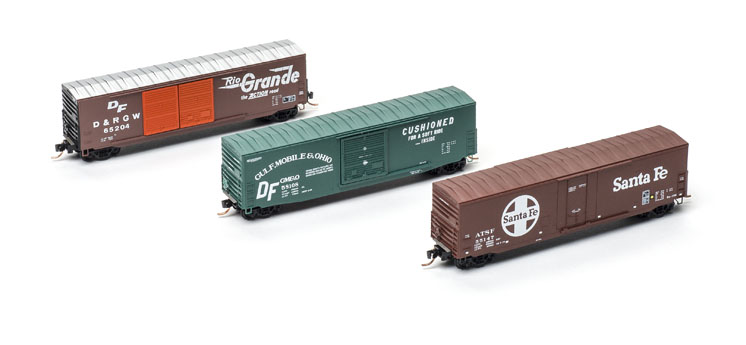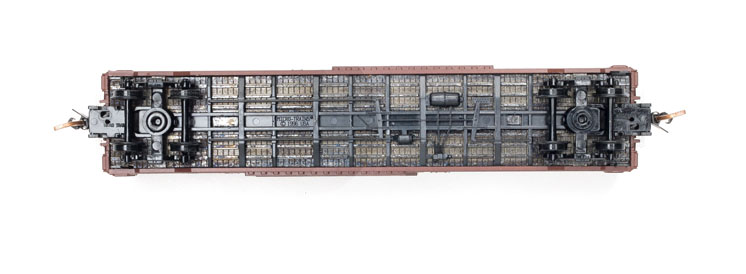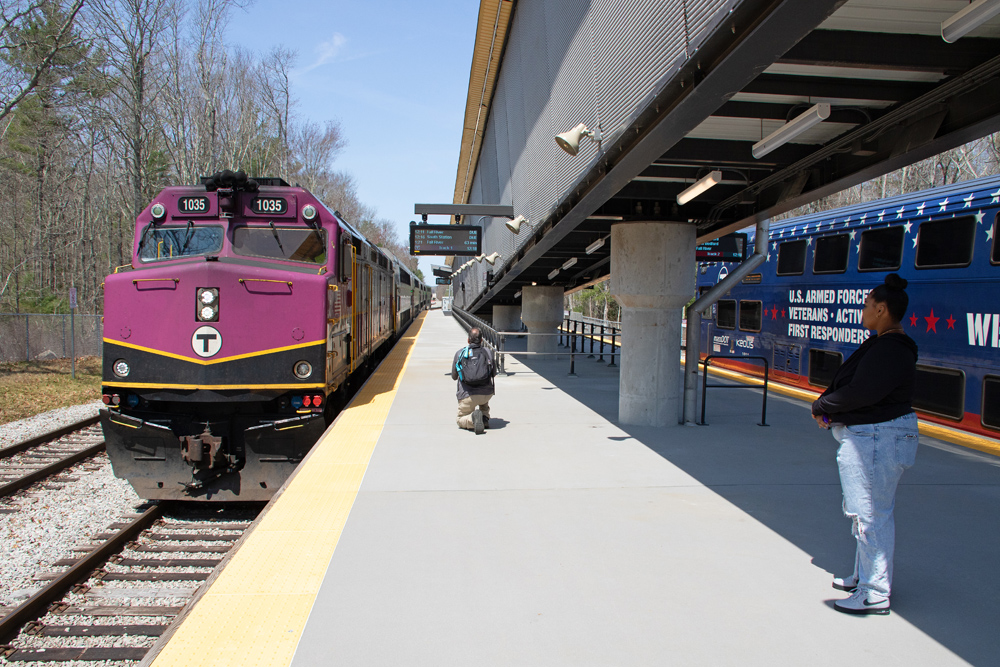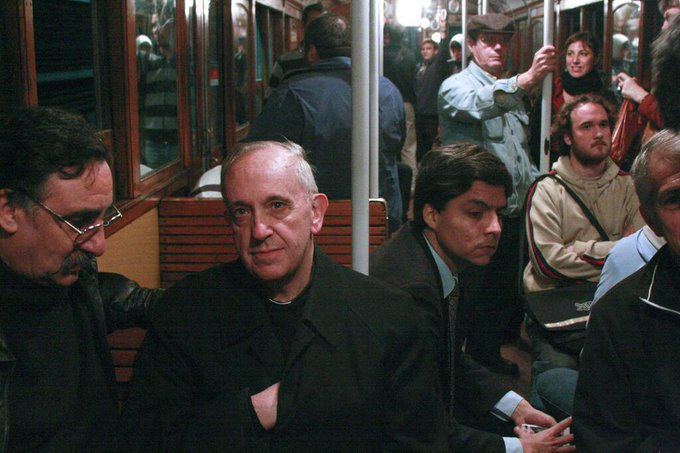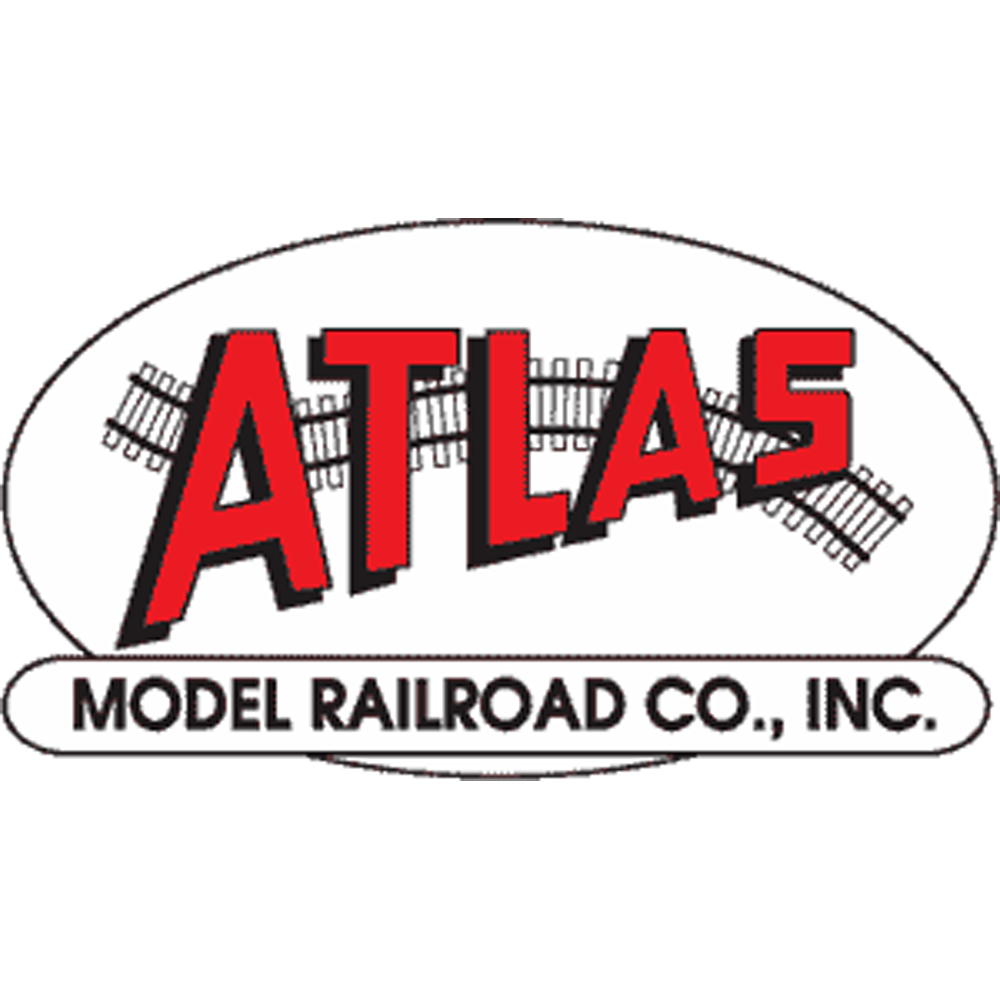With more than 50,000 built over the course of nearly two decades, Pullman-Standard’s 50-foot steel boxcar has been a common sight on North American rails for half a century. Micro-Trains Line Co. is offering late-production models of the ubiquitous freight car, with single plug doors, 10-foot sliding doors, or double 8-foot sliding doors.
After World War II, railroads found themselves in need of more, and larger, freight cars to handle increased demand from shippers. Pullman-Standard started building 50-foot boxcars in 1949, and production ramped up over the next few years. In 1961, P-S made some minor changes to the design, including fish-belly side sills, short corner ladders, low brake wheels, and no running boards. Micro-Trains’ models represent these late-production cars, built after 1961.
The models. We reviewed three samples: an Oxide Red Atchison, Topeka & Santa Fe plug-door car; a green Gulf, Mobile & Ohio single-door version; and a Denver & Rio Grande Western model in Freight Car Red with orange double doors. The single-piece carbodies have accurate roofs and ends, finely molded panel weld lines, molded short ladders and grab irons, separately applied low brake wheels, and etched-metal crossover platforms.
The paint was smoothly and evenly applied, and the white printing was without flaws or gaps. Even the COTS (clean, oil, test, and stencil) panels were legible under magnification.
The bodies are snapped onto die-cast metal floors that give the cars most of their 1.1-ounce weight. (This matches the National Model Railroad Association’s recommended weight under Recommended Practice 20.1.) Below the floor is a molded plastic casting combining the underframe and brake gear. Though the prototype description on two of the cars’ jewel boxes mentions cushioned draft gear, the underframes are standard types that don’t model this feature.
All three cars have truck-mounted draft gear, typical of Micro-Trains cars. In fact, the Gulf, Mobile & Ohio car, which should have a longer length over the couplers’ striking faces due to its Hydroframe-40 cushioned draft gear, actually has shorter draft gear boxes than the other two.
Prototypical variety. I was impressed that the car bodies varied to follow their prototypes in more than just the door styles. Prototype photos showed a variety of side sills on the car; early models had notched sills, while later-production cars had either a shallow fish-belly profile or a more abrupt diagonal. Micro-Trains’ cars model both of the latter types. The GM&O car also bears riveted gussets surrounding the bottom corners of the door openings, as depicted in drawings of a GM&O car published in Mainline Modeler. The dimensions I measured on all three cars matched those drawings, except the length over the couplers.
The cars ran flawlessly over the 13″ curves and no. 6 turnouts of our N scale Red Oak project layout, and coupled easily to each other. Though the couplers were mounted at the correct height, their trip pins were about 0.2″ too high, which was easily corrected with a pair of trip pin pliers.
Model railroads set in the 1960s to 1990s need a lot of 50-foot boxcars. With its variety of door arrangements and prototypical details, Micro-Trains’ offerings let you build a realistic roster of cars that don’t look like they all emerged from the same cookie-cutter car shop.
Price: $23.70 (plug door), $25.90 (10-foot door), $29.60 (double doors)
Manufacturer
Micro-Trains Line Co.
351 Rogue River Parkway
Talent, OR 97540
www.micro-trains.com
Era: mid-1960s to late 1980s/early 1990s, depending on road name
Road names: Atchison, Topeka & Santa Fe (with plug doors); Denver & Rio Grande Western (with double 8-foot Pullman-Standard doors); Gulf, Mobile & Ohio (with 10-foot Pullman-Standard doors)
Features
Die-cast metal floor with one-piece molded plastic underframe/brake gear
Etched-metal crossover platforms
Magne-Matic couplers, at correct height (trip pins about .02″ high)
One-piece molded plastic body
Roller-bearing trucks with molded plastic wheelsets, in gauge
Weight: 1.1 ounces (matches National Model Railroad Association RP-20.1)





